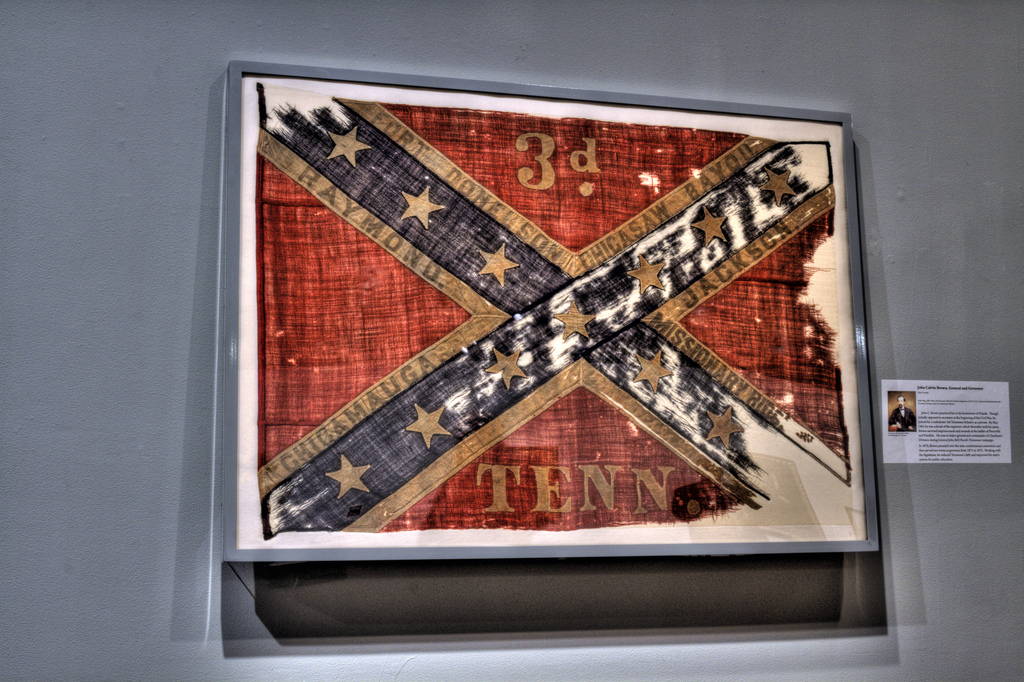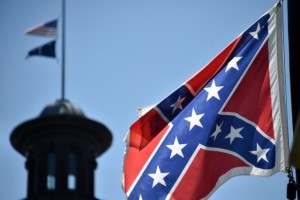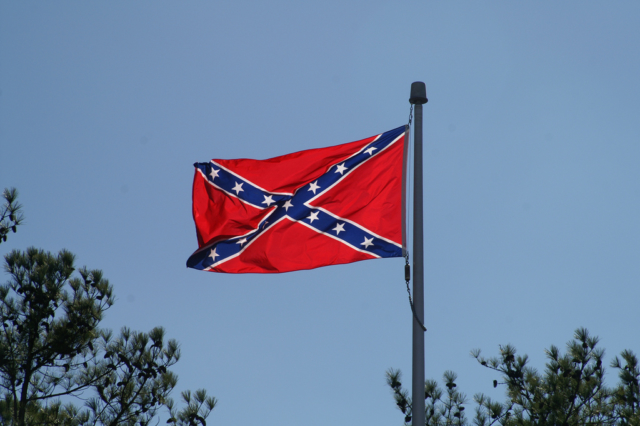The mass shooting June 17 at a historically black South Carolina church has raised the national debate on flying the Confederate flag. On Tuesday, South Carolina Governor Nikki Haley, joining other prominent lawmakers, called for the removal of the Confederate flag that hangs on the grounds of the state capitol.

Photo by Larry Darling.
W
hat is the Confederate flag?
The Confederate flag represents the Confederate States of America, which existed in the United States from 1861-1865. Following the election of President Abraham Lincoln in 1860, 11 states seceded from the Union — including South Carolina — fearing that Lincoln, who was against slavery, would abolish the practice. Secessionists feared this would significantly harm the economy of the American South — southern states had depended on slave labor from Africa to produce, among other things, cotton and tobacco for nearly 100 years.
The flag has changed over the years. The current version is a modification of the Confederate battle flag designed by politician William Porcher Miles. But despite the Confederacy’s defeat by the Union 150 years ago, seven southern states, including South Carolina, continue to fly the Confederate flag, the Washington Post reported.

The South Carolina and American flags flying at half-staff behind the Confederate flag erected in front of the State Congress building in Columbia, South Carolina on June 19, 2015. (AFP PHOTO/MLADEN ANTONOV)
W
hy does South Carolina still fly the Confederate flag?
Flying the Confederate flag at the South Carolina state house is protected under the South Carolina Heritage Act. That was aimed at removing the Confederate flag from atop the dom, the foyer and chambers and moving the flag to the Confederate Soldiers’ Monument, also on the Capitol grounds. The law stated that only the U.S. and South Carolina state flags can be flown from the dome, but that the Confederate battle flag “must be displayed” at the monument and that the flagpole should be “approximately equal in height to and immediately adjacent to the Confederate Soldiers’ Monument.”
The state faced controversy when the U.S. and South Carolina state flags were lowered in mourning following the mass shooting at the Emanuel African Methodist Episcopal Church, while the Confederate flag was not. The flag could not be lowered because its poll doesn’t have a pulley system, according to a Washington Post report.

A man shouts slogans during a protest rally against the Confederate flag in Columbia, South Carolina on June 20, 2015. (AFP PHOTO/MLADEN ANTONOV)
W
ho wants the Confederate flag gone, and who wants it to stay?
Those who oppose the flag view it as a symbol of racism, slavery, and hatred. The recent church shooting has escalated this debate, as the alleged perpetrator Dylann Roof, had posed with Confederate flags in photographs.
The Atlantic columnist Ta-Nehisi Coates recently wrote:
“The Confederate flag’s defenders often claim it represents ‘heritage not hate.’ I agree—the heritage of White Supremacy was not so much birthed by hate as by the impulse toward plunder. Dylann Roof plundered nine different bodies last night, plundered nine different families of an original member, plundered nine different communities of a singular member,” Coates said. “An entire people are poorer for his action. The flag that Roof embraced, which many South Carolinians embrace, does not stand in opposition to this act—it endorses it.”
Those in support of keeping the flag say it represents their Civil War heritage, and honors the memory of the Confederate soldiers.
A November 2014 Winthrop Poll surveyed residents in South Carolina and found that 73 percent of whites wanted the flag to remain, while 61 percent of blacks wanted it removed, CNN reported.

South Carolina Gov. Nikki Haley speaks during a news conference in the South Carolina State House, Monday, June 22, 2015, in Columbia, S.C. Haley said that the Confederate flag should come down from the grounds of the state capitol, reversing her position on the divisive symbol amid growing calls for it to be removed. Also pictured are U.S. Congressman James Clyburn, left, and U.S. Sen. Tim Scott, right. (Tim Dominick/The State via AP)
W
hat will happen next?
Following South Carolina Gov. Haley’s request to the state legislature to remove the flag from the capitol grounds, legislators in the state House of Representatives approved a measure that would allow them to debate the issue later this summer. South Carolina state Sen. Vincent Sheheen also introduced a bill calling for removing the flag from the Statehouse to the Confederate Relic Room and Military Museum.
According to the South Carolina Heritage Act, the Confederate flag cannot be removed from the Confederate Soldier’s Monument “without the enactment of a joint resolution by a two-thirds vote of the membership of each house of the General Assembly.”
Story compiled with information from the Associated Press, The Washington Post, PBS News Hour, History.com, and CNN.
 CGTN America
CGTN America Photo by Carl Wainwright.
Photo by Carl Wainwright.
